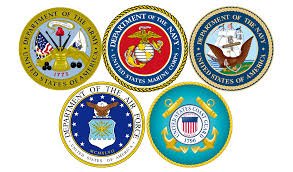
The seals of the Coast Guard are intended only for official use, and should not be copied without permission from the U.S. Coast Guard. The Coast Guard Ensign is the symbol of the United States Coast Guards law enforcement power, and is, as required by law in Federal Law 14 U.S.C. 639, restricted to official use only.
In the United States, the military seals and emblems have a variety of uses across offices and departments. The Eagle represents the oldest continuously used military insignia in the nation. The obverse design is that of the U.S. coat of arms — an official symbol, identifying marker, and symbol of the federal governments power.
The design for Michigan’s official state flag, recommended by adjutant general John Robertson and approved by governor Crapo, features on one side a state coat of arms in blue. Numerous flags bearing the state coat of arms have been used since, with various designs and emblems. Both the Great Seal and the Michigan State Coat of Arms were adopted by the Constitutional Convention of 1835.
It was presented at the Constitutional Convention of 1835, and adopted June 2, 1835, as Michigan’s official Great Seal. No facsimile or copying of Michigan’s Great Seal may be used in any way not related to the state’s official functions. The Official Arms and Seals of the State, either in replica, impression, or facsimile form, must be made and used only at the direction of, and with approval from, the Secretary of the State.
On October 9, 1662, the same day that a new royal charter was read at Hartford, the General Assembly officially declared that the original Connecticut’s seal shall remain in the custody of the Secretary of State for the Colony of Connecticut, to be used on necessitated occasions as a Colony Seal. The Rhode Island General Assembly adopted their own seal for the first time, with an affixed seal, on May 4, 1664. Then, as the United States came into being, the Continental Congress took action to secure the Seal of the United States.
The U.S. Marine Corps adopted the eagle as their symbol at the same time that they adopted the present Marine Corps seal. During its more than 200-year history, the U.S. Marine Corps has used a number of different official emblems and insignia, but none has had more longevity than the Eagle, Globe, and Anchor (EGA). The Marine Corps seal is based on the revised version of the Marine Corps Emblem, replacing the American bald eagle with a previously used crowned eagle.